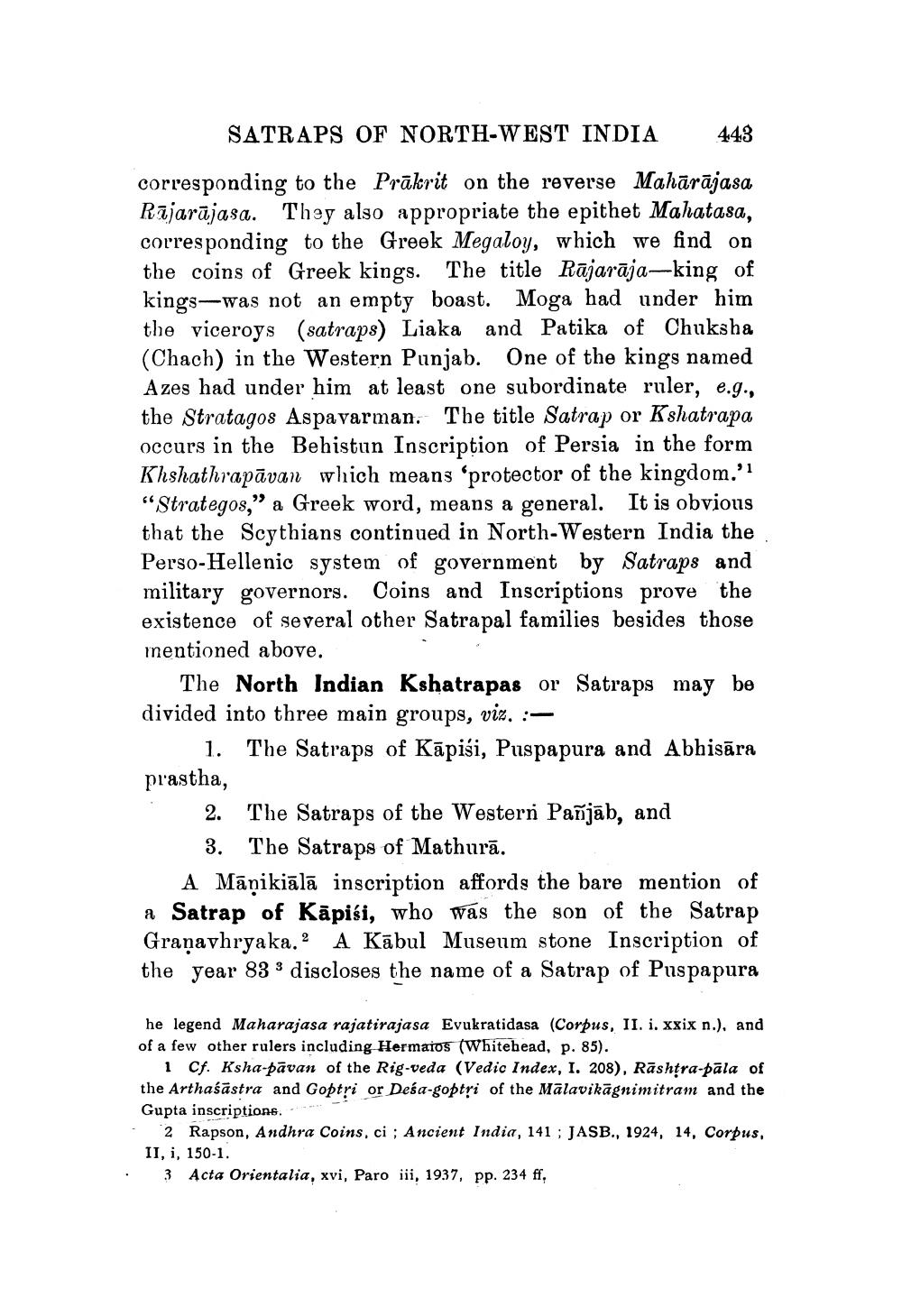________________
SATRAPS OF NORTH-WEST INDIA
443
corresponding to the Prākrit on the reverse Mahārājasa Rājarūjasa. They also appropriate the epithet Mahatasa, corresponding to the Greek Megaloy, which we find on the coins of Greek kings. The title Rājarāja—king of kings-was not an empty boast. Moga had under him the viceroys (satraps) Liaka and Patika of Chuksha (Chach) in the Western Punjab. One of the kings named Azes had under him at least one subordinate ruler, e.g., the Stratagos Aspavarman. The title Satrap or Kshatrapa occurs in the Behistun Inscription of Persia in the form Khshathrapāvan which means 'protector of the kingdom.'' “Strategos," a Greek word, means a general. It is obvious that the Scythians continued in North-Western India the Perso-Hellenic system of government by Satraps and military governors. Coins and Inscriptions prove the existence of several other Satrapal families besides those mentioned above.
The North Indian Kshatrapas or Satraps may be divided into three main groups, viz. :--
1. The Satraps of Kāpisi, Puspapura and Abhisāra prastha,
2. The Satraps of the Western Pañjāb, and
3. The Satraps of Mathurā. A Māņikiālā inscription affords the bare mention of a Satrap of Kāpisi, who was the son of the Satrap Graņavhryaka.2 A Kābul Museum stone Inscription of the year 83 % discloses the name of a Satrap of Puspapura
he legend Maharajasa rajatirajasa Evukratidasa (Corpus, II. i. xxix n.), and of a few other rulers including Hermaios (Whitehead, p. 85).
1 Cf. Ksha-pāvan of the Rig-veda (Vedic Index, I. 208), Rāshtra-pāla of the Arthaśāstra and Goptri or Desa-goptri of the Malavikāgnimitram and the Gupta inscriptions. ***
2 Rapson, Andhra Coins, ci ; Ancient India, 141 ; JASB., 1924, 14, Corpus, II, i, 150-1. • 3 Acta Orientalia, xvi, Paro iii, 1937, pp. 234 ff,




